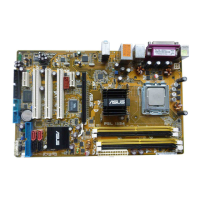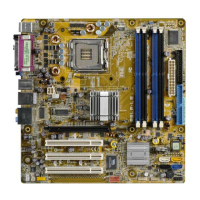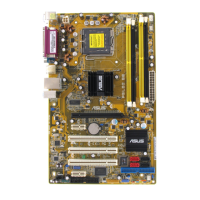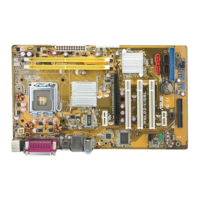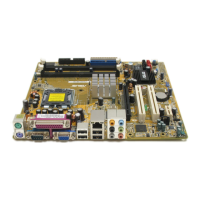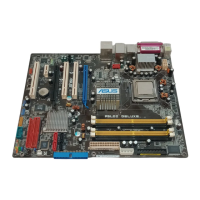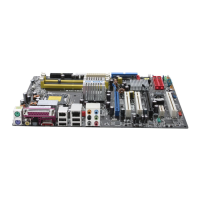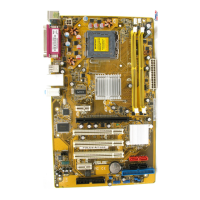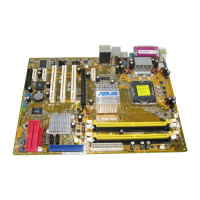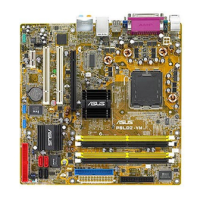Do you have a question about the Asus P5L-MX and is the answer not in the manual?
Details significant features like LGA775 CPU support, 64-bit support, and chipset capabilities.
Essential safety guidelines and precautions to follow before installing or removing motherboard components.
Step-by-step instructions for correctly installing the CPU into the LGA775 socket.
Detailed guide for installing the heatsink and fan to ensure proper CPU cooling.
Instructions for installing DDR2 DIMM modules, including dual-channel configuration.
Covers utilities for updating the BIOS, including EZ Flash, AFUDOS, CrashFree BIOS 2, and ASUS Update.
Details advanced configurations for CPU, chipset, USB, and PCI devices for performance tuning.
Guide to installing drivers for chipset, graphics, audio, and LAN for proper hardware function.
Details significant features like LGA775 CPU support, 64-bit support, and chipset capabilities.
Essential safety guidelines and precautions to follow before installing or removing motherboard components.
Step-by-step instructions for correctly installing the CPU into the LGA775 socket.
Detailed guide for installing the heatsink and fan to ensure proper CPU cooling.
Instructions for installing DDR2 DIMM modules, including dual-channel configuration.
Covers utilities for updating the BIOS, including EZ Flash, AFUDOS, CrashFree BIOS 2, and ASUS Update.
Details advanced configurations for CPU, chipset, USB, and PCI devices for performance tuning.
Guide to installing drivers for chipset, graphics, audio, and LAN for proper hardware function.
| Non-ECC | Yes |
|---|---|
| Number of memory slots | 2 |
| Maximum internal memory | 4 GB |
| Processor socket | LGA 775 (Socket T) |
| Processor manufacturer | Intel |
| Number of SATA connectors | 4 |
| Number of Parallel ATA connectors | 1 |
| Manageability features | WfM 2.0, DMI 2.0, WOL PME, WOR PME, PXE |
| Headphone outputs | 3 |
| USB 2.0 ports quantity | USB 2.0 ports have a data transmission speed of 480 Mbps, and are backwards compatible with USB 1.1 ports. You can connect all kinds of peripheral devices to them. |
| BIOS type | AMI |
| BIOS memory size | 32 Mbit |
| Audio chip | ADI AD1986A |
| Power source type | ATX |
| Audio output channels | 5.1 channels |
| Motherboard form factor | micro ATX |
| Compatible operating systems | Windows Vista/XP/2000 |
| Graphics card | GMA 950 |
| Networking features | 100/1000 |

